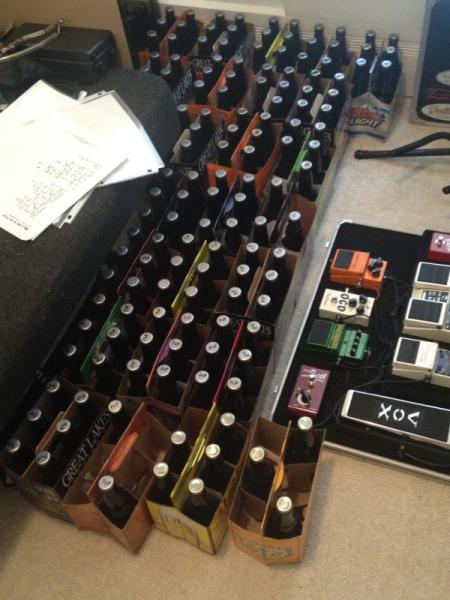theDeutscher
Well-Known Member
Alright. I like to think that I've got a pretty decent grasp on yeast until something like this gets me confused/frustrated. I've got a couple lagers under my belt and realize the importance of a huge pitch. I already know that it takes a ton of yeast for these babies. On that note, I ordered some ingredients last week from Brewmasters Warehouse and received a vial of WLP802 Czech Budejovice Lager. Now, in the past, my lager vials were pretty fresh and I was able to get away with brewing up about a 1.5 gallon starter and pitching the slurry. However, on this vial, the best buy date was 6/16/12... expires two weeks after I received it. Using the infamous Mr. Malty pitching rate calculator, with 1 vial, I would have to make.... well, I really can't make a big enough pitch with one vial.... I would basically have to make a 5-6 gallon starter with 1 vial. My next closest bet would be to buy 2 vials and make a 3 gallon starter... or how about 4 vials with a 1.5 gallon starter. This is with occasional stirring/shaking, by the way. Even with a stir plate, it doesn't really change much with the amount of vial, just a slightly smaller starter wort. I guess my question is - Has anyone really been able to tell a difference in yeast performance when using yeast that was produced more recently opposed to closer to the expiration date. I'd like to think that if there's a best buy date, you should be getting the same product whether it's right out of the lab or close to expiring. Why should I have to buy 2-4 vials for the same price as a fresh vial that requires a smaller starter without the extra vials???










![Craft A Brew - Safale S-04 Dry Yeast - Fermentis - English Ale Dry Yeast - For English and American Ales and Hard Apple Ciders - Ingredients for Home Brewing - Beer Making Supplies - [1 Pack]](https://m.media-amazon.com/images/I/41fVGNh6JfL._SL500_.jpg)

















































